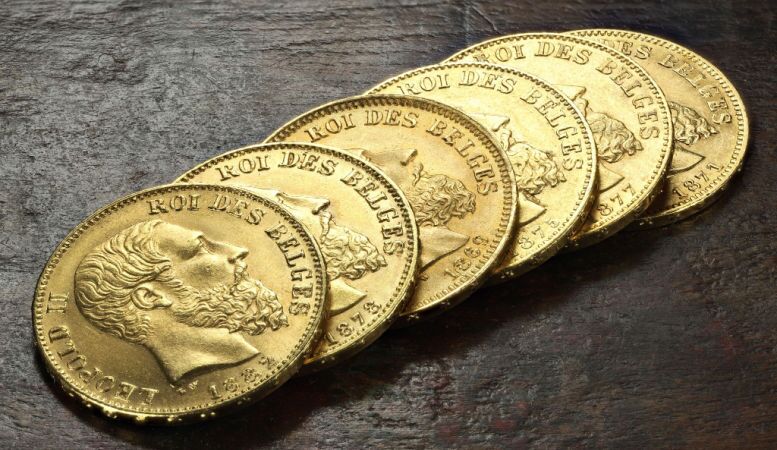Table of Contents
Coin collecting is a fascinating and rewarding hobby. Many collectors have coins from other countries to diversify their collections. However, sometimes determining a collected coin’s country of origin can be a challenge!
Identifying one coin or several from a different country’s currency requires a solid understanding of foreign languages and symbols. As such, it is not always an easy task.
If you want to learn how to identify a foreign coin in your collection, our pros from The Oxford Gold Group will explain the basics of collecting world coins in this article.
How Can You Identify a Particular Foreign Coin?

Coins from around the world and from different historical periods have different shapes, colors, sizes, and designs, making them intriguing subjects for anyone with an interest in different cultures, nations, and historical civilizations. If you want to sell some of the world coins in your collection, being able to identify them is crucial to estimating coin values.
One of the easiest ways to identify gold, copper, or silver coins in your collection is by using a catalog. A coin catalog contains details, descriptions, and images of coins from around the world to help collectors determine a coin’s identity and origin. Another simple way to classify a coin and its approximate value is by taking the coin to a local coin dealer.
Methods for Identifying Foreign Coins
Paying close attention to the details on a coin is crucial for identification. When classifying a foreign coin, look for the following characteristics.
Coin Language and Script Identification
Language is one of the first things to look for on a foreign coin. Most countries use their native language and an alphabet or script for coin inscriptions. Various script systems include Latin, Cyrillic, Arabic, and various Asian pictographic scripts, as well as many others.
English-speaking nations feature the Latin script (alphabet) on coinage. Other European, Central/South American, and African countries also use the Latin alphabet but in their own languages. Examples include Spanish, French, German, Dutch, etc.
Coins from Slavic countries, as well as a few others, will bear Cyrillic inscriptions. These include Russia, Belarus, Ukraine, Serbia, Montenegro, Macedonia, Bulgaria, Uzbekistan, and Mongolia.
You’ll find Arabic script on most coins from Middle Eastern Arab nations as well as several non-Islamic countries. Collectible Arabic coins have a long and fascinating history dating back to ancient times, including many rare coins of high value.
Most Asian nations, such as China, Japan, and Thailand, use logographic or pictographic writing systems. Many collectors covet finding a Chinese coin with a date before 1949, especially from the Dynastic era before 1911.
Check the Date
A coin’s date is another valuable piece of data. Once you locate the date of a coin, find a conversion catalog for important data about numericals in the writing systems of each country.
Metal Identification
Fortunately, discerning the metal is usually relatively straightforward. Most are gold, silver or copper, or an alloy, although you can find coins of platinum, bronze, or nickel, too. The type of metal also contributes to a coin’s valuation.
Is There an App That Can Identify Foreign Coins?
If you struggle to determine which country your coin comes from or do not have access to a coin collection catalog, you have other resources. For example, Coinscope is a popular mobile app that makes it easy to discover a coin’s country and potential value.
Types of Foreign Coins

Be aware that the currency systems for various countries and regions have changed throughout history due to shifting political configurations and regimes. For example, after the formation of the European Union, many nations with previously distinct currencies switched to the Euro system after 1999.
Foreign Coins That Are Popular for Coin Collecting Today
Deciding which coins to collect ultimately depends on preference and budget. However, many coin collectors today seek to obtain the following types of foreign coins:
- Chinese (People’s Republic of China) Renmibi (RMB)
- Israeli New Israel Shekel (NIS)
- East Caribbean States Dollar (EC$)
- Italian Lira (1861-2002) (ITL)
- French Franc (1795-2001) (FRF)
- Thai Baht (THB)
- Spanish Peseta (1868-2002)(ESP)
- Hong Kong Dollar (HKD)
- Belgian Franc (1832-2002)(BEF)
Explore the Benefits of Owning Silver and Gold Coins
Coin collecting is a special way to experience foreign cultures while making a sound investment. Knowing how to distinguish gold coins, silver coins, and others can help you discover the country of origin, estimate coin values, and learn more about culture and history.
If you’re ready to explore coin investing, contact our Oxford Gold Group experts. Our team is able to get clients the best prices for their gold or silver coin collections.
Call us at 833-600-GOLD to learn more.








